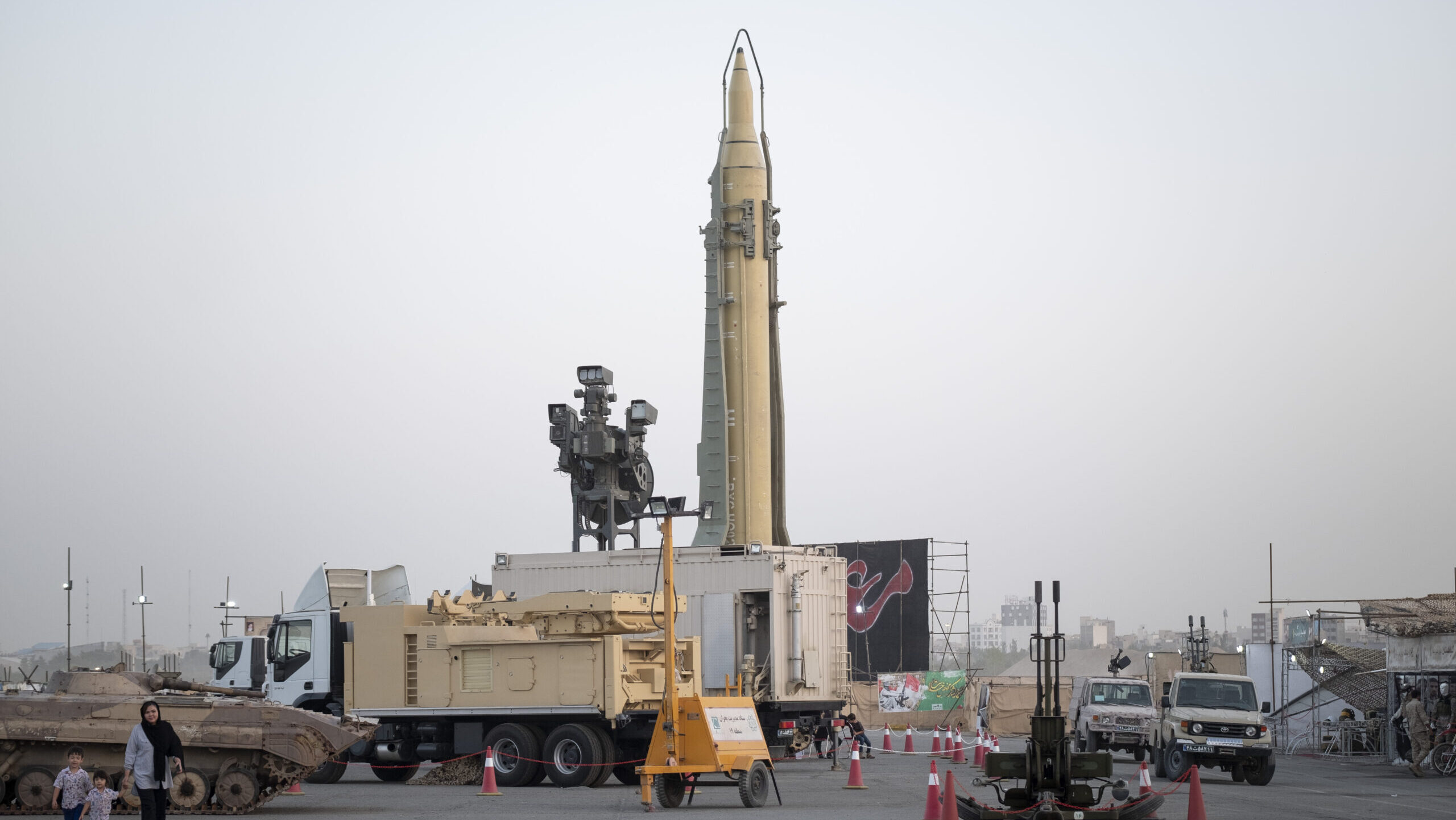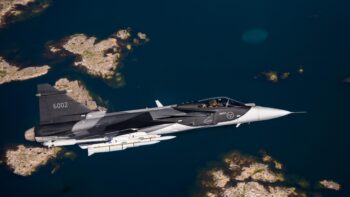
A view of Iranian long range surface to surface Qadr missile in a war exhibition which is held and organized by the Islamic Revolutionary Guard Corps (IRGC) in a park in southern Tehran to mark the anniversary of the Iran-Iraq war (1980-88) on September 23, 2021. (Morteza Nikoubazl/NurPhoto via Getty Images)
BEIRUT — For years, Iran has avoided identifying itself publicly as supplying Houthi militias operating out of Yemen with anti-ship missile technology, despite governments and researchers around the world all making the link undeniable. But that may be shifting, based on a surprise statement made last week.
Tasnim, the Islamic Revolutionary Guard Corps (IRGC) affiliated news agency, said last week that Iran’s “naval ballistic missile technology is at the disposal” of the militias, claiming that these Houthis missiles are “inspired by Iran.”
In another long report in Persian language on the same news agency, Tehran gave a detailed look at its anti-ship missile technology. “The Environment missile of the Yemeni armed forces is actually designed with the exact model of the Iranian Qadr anti-submarine missile,” the Tasnim report said.
Analysts told Breaking Defense that Iran’s “mask” is now off, with Tehran eschewing deniability and now acknowledging, for the first time, that Iran has transferred missile technology to Houthis.
“It’s the first admission that anti-ship missile technology has been transferred from Iran. [Announcements earlier were] in general terms about drones and missiles being transferred to the Houthi,” IISS research fellow Fabian Hinz told Breaking Defense.
Senior fellow at The Foundation for Defense of Democracies think tank, Behnam Ben Taleblu, said Iran has increasingly become brazen about its efforts in the region.
“First the gloves came off, and now the mask. The more successful Iran’s regional policy is, the more the regime is moving to flirt with taking credit for it rather than hiding behind its proxies,” Ben Taleblu said.
He highlighted that the Houthis are “the only proxy of Iran to have paraded and used anti-ship ballistic missiles and medium-range ballistic missiles. This puts the Houthis in a class of their own in the Axis of Resistance as a non-state actor with state level capabilities.”
Iran’s proliferation of long-range strike technology allows “its proxies to engage in a ring of fire strategy, a strategy which allows Tehran to flex its muscles on land and now at sea,” Ben Taleblu noted.
The Tasnim news report claims that in recent years Iran “has been able to pursue the level of support for the resistance front higher than before,” and “it has put technology transfer on its agenda in order to make the resistance groups more powerful,” something analysts see as a reflection of Tehran’s perception of strength.
“Iran clearly thinks it has established a level of deterrence against outside attack with its Israel raid. Iran had abandoned the subterfuge that Houthi weapons were indigenously produced and now assumes it has an inviolate industrial base,” David Des Roches, associate professor at the Near East South Asia Center for Security Studies, told Breaking Defense.
He highlighted that Iran’s decision to acknowledge “what we all knew” is “important, as a reflection of Iran’s perception of strength in the world as well as of their desire to let their various proxies (who have been suffering under attack for some months now) know that Iran actually has skin in the game.
“Iran is willing to fight Israel down to the last Arab, but by acknowledging their involvement explicitly they are also making a concession to their Arab subordinates by taking on an element of risk themselves.”
While all three experts agree that these missiles are not new, Des Roches said that its new “that Iran is abandoning the fiction that these were produced by Yemenis. I read this proclamation as first an exercise in coalition management — Iran is sending Arabs into battle while remaining safe. This inevitably leads to problems with the various proxy groups, so Iran must find a way to show it has skin in the game. This is one small way to do so.”
RELATED: Crowded waters: Who’s doing what in the international hotspot of the Red Sea
In November 2023, Houthis began launching missile, drone and even unmanned surface vessel attacks against commercial shipping in what the group said was common cause with Hamas’ Oct. 7 attack on Israel.
These attacks on vessels in Red Sea have become a habit to the armed group recently, even after Western countries reacted by sending military vessels under different operations like Prosperity Guardian and EUNAVFOR ASPIDES, to intercept the missiles, or Poseidon Archer, which has launched retaliatory strikes at the Houthis.
The latest strikes carried by US and UK on Houthi targets in Yemen, took place on May 31, the first such response in three months.
Saab CEO floats Euro defense ‘coalition,’ plans to fly unmanned combat demonstrator
“We should sort of understand that we need to do more in Europe, nation by nation, of course, but also as part of the alliance, being a strong pillar in NATO” said Saab CEO Micael Johansson.



























